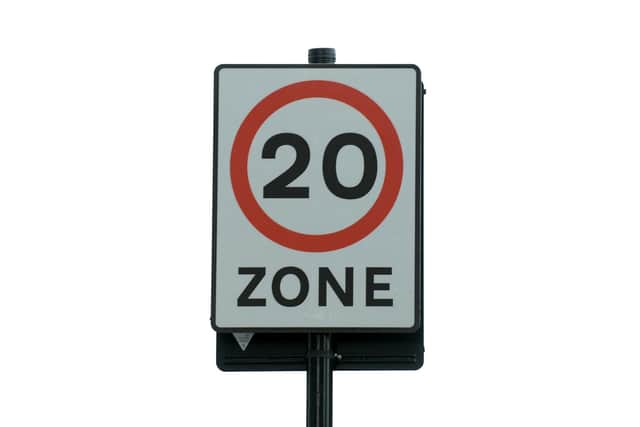We need to look at the benefits of 20mph zones when it comes to road safety and efficiency - Dr Alan Billings
She feels passionately that speeding has to be tackled across the country, partly because of RTCs but also because of the need to reduce carbon emissions. She has been at the forefront of a 20mph campaign in Hampshire, where she lives. Speaking to her afterwards she urged me to look again at the evidence.
Although local speed limits in South Yorkshire are the responsibility of the district councils, not the police, I am often asked in community meetings to support proposals to reduce speed limits in particular towns or villages or along particular stretches of road. I am generally persuaded by what I hear but I usually take the view that there may be more to be said than I am hearing in the meetings and there is a cost in bringing in a new speed limit and changing the signage. These are matters that local councillors have to consider and it is not really for me to tell them what their priorities ought to be.
Advertisement
Hide AdAdvertisement
Hide AdHowever, I do have a concern for road safety. So with the pleas of my daughter-in-law and three grandchildren echoing around my head, I have been looking again. It seems that an argument has already carried the day in Wales on this as well. The default position on Welsh roads is now 20mph. This should provide a large-scale test case for the rest of the country within a year or two of being in operation.


The campaign would seek a 20mph speed limit on all those roads where people live, work, shop, play or learn, with 30mph as the exception. Leaving aside the health and climate change benefits, this would bring through reduced air pollution and emissions, the safety considerations are quite stark. The Department of Transport estimates that a 1mph lower speed in built-up areas reduces road casualties by 6 per cent.
A 20mph speed limit would result in 30 per cent fewer casualties. Stopping times are crucial if we want to reduce casualties, including deaths. It is a sobering thought that at the point where a car travelling at 20mph stops, a car being driven at 30mph is still moving – at 24mph. It is perhaps not surprising that speed is reported as a factor in nearly half of all fatalities.
The demand for speed reductions of this order have often come from parents worried about the speed of vehicles going past their child’s school. While I understand that – there are many children around the school at the beginning and end of the school day with cars pulling up to disgorge or collect them – many children have to make their way to school along roads that can be potentially dangerous.
Advertisement
Hide AdAdvertisement
Hide AdEnforcement is an issue; but enforcement is an issue now, not least on the many side-roads in urban areas that are already 20mph. But even without enforcement and without physical traffic calming measures, road safety still improves. Drivers reduce their speeds between 3 and 6 mph.
There are other benefits that may persuade motorists. Fuel efficiency seems to peak where speed is capped at 20mph because there is much less acceleration and use of fuel.
A shortened version of the Police and Crime Commissioner for South Yorkshire’s latest blog post.